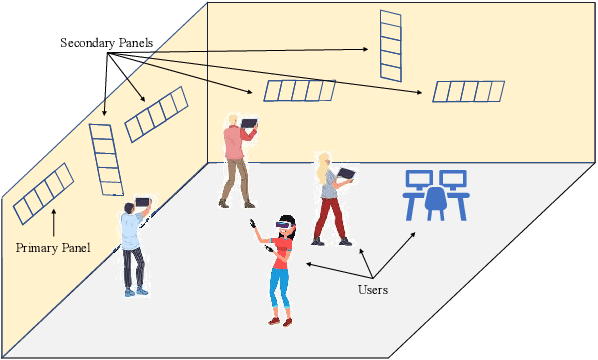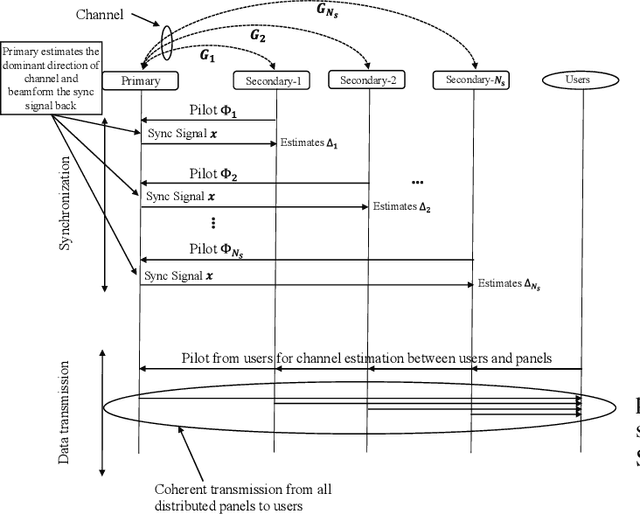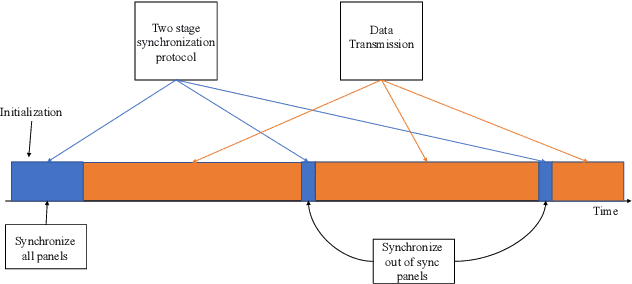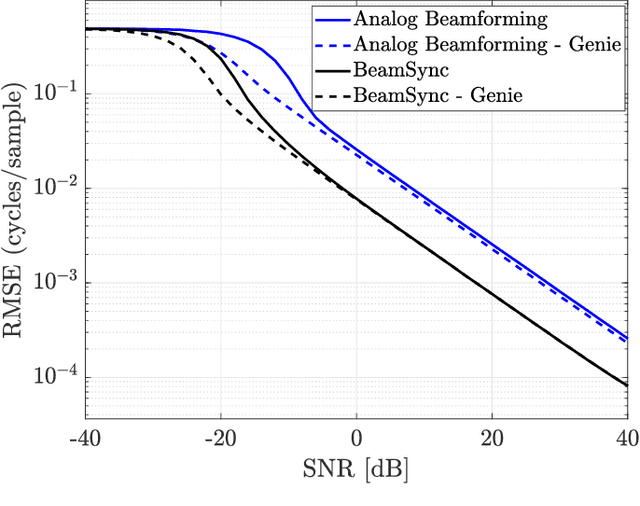Unnikrishnan Kunnath Ganesan
Online Conformal Compression for Zero-Delay Communication with Distortion Guarantees
Mar 11, 2025Abstract:We investigate a lossy source compression problem in which both the encoder and decoder are equipped with a pre-trained sequence predictor. We propose an online lossy compression scheme that, under a 0-1 loss distortion function, ensures a deterministic, per-sequence upper bound on the distortion (outage) level for any time instant. The outage guarantees apply irrespective of any assumption on the distribution of the sequences to be encoded or on the quality of the predictor at the encoder and decoder. The proposed method, referred to as online conformal compression (OCC), is built upon online conformal prediction--a novel method for constructing confidence intervals for arbitrary predictors. Numerical results show that OCC achieves a compression rate comparable to that of an idealized scheme in which the encoder, with hindsight, selects the optimal subset of symbols to describe to the decoder, while satisfying the overall outage constraint.
Cell-Free Massive MIMO with Multi-Antenna Users and Phase Misalignments: A Novel Partially Coherent Transmission Framework
Mar 01, 2024Abstract:Cell-free massive multiple-input multiple-output (MIMO) is a promising technology for next-generation communication systems. This work proposes a novel partially coherent (PC) transmission framework to cope with the challenge of phase misalignment among the access points (APs), which is important for unlocking the full potential of cell-free massive MIMO technology. With the PC operation, the APs are only required to be phase-aligned within clusters. Each cluster transmits the same data stream towards each user equipment (UE), while different clusters send different data streams. We first propose a novel algorithm to group APs into clusters such that the distance between two APs is always smaller than a reference distance ensuring the phase alignment of these APs. Then, we propose new algorithms that optimize the combining at UEs and precoding at APs to maximize the downlink sum data rates. We also propose a novel algorithm for data stream allocation to further improve the sum data rate of the PC operation. Numerical results show that the PC operation using the proposed framework with a sufficiently small reference distance can offer a sum rate close to the sum rate of the ideal fully coherent (FC) operation that requires network-wide phase alignment. This demonstrates the potential of PC operation in practical deployments of cell-free massive MIMO networks.
BeamSync: Over-The-Air Synchronization for Distributed Massive MIMO Systems
Nov 18, 2023Abstract:In distributed massive multiple-input multiple-output (MIMO) systems, multiple geographically separated access points (APs) communicate simultaneously with a user, leveraging the benefits of multi-antenna coherent MIMO processing and macro-diversity gains from the distributed setups. However, time and frequency synchronization of the multiple APs is crucial to achieve good performance and enable joint precoding. In this paper, we analyze the synchronization requirement among multiple APs from a reciprocity perspective, taking into account the multiplicative impairments caused by mismatches in radio frequency (RF) hardware. We demonstrate that a phase calibration of reciprocity-calibrated APs is sufficient for the joint coherent transmission of data to the user. To achieve synchronization, we propose a novel over-the-air synchronization protocol, named BeamSync, to calibrate the geographically separated APs without sending any measurements to the central processing unit (CPU) through fronthaul. We show that sending the synchronization signal in the dominant direction of the channel between APs is optimal. Additionally, we derive the optimal phase and frequency offset estimators. Simulation results indicate that the proposed BeamSync method enhances performance by 3 dB when the number of antennas at the APs is doubled. Moreover, the method performs well compared to traditional beamforming techniques.
BeamSync: Over-The-Air Carrier Synchronization in Distributed RadioWeaves
Dec 01, 2021



Abstract:In a distributed multi-antenna system, multiple geographically separated transmit nodes communicate simultaneously to a receive node. Synchronization of these nodes is essential to achieve a good performance at the receiver. RadioWeaves is a new paradigm of cell-free massive MIMO array deployment using distributed multi-antenna panels in indoor environments. In this paper, we study the carrier frequency synchronization problem in distributed RadioWeave panels. We propose a novel, over-the-air synchronization protocol, which we call as BeamSync, to synchronize all the different multi-antenna transmit panels. We also show that beamforming the synchronization signal in the dominant direction of the channel between the panels is optimal and the synchronization performance is significantly better than traditional beamforming techniques.
Clustering-Based Activity Detection Algorithms for Grant-Free Random Access in Cell-Free Massive MIMO
Nov 30, 2021



Abstract:Future wireless networks need to support massive machine type communication (mMTC) where a massive number of devices accesses the network and massive MIMO is a promising enabling technology. Massive access schemes have been studied for co-located massive MIMO arrays. In this paper, we investigate the activity detection in grant-free random access for mMTC in cell-free massive MIMO networks using distributed arrays. Each active device transmits a non-orthogonal pilot sequence to the access points (APs) and the APs send the received signals to a central processing unit (CPU) for joint activity detection. The maximum likelihood device activity detection problem is formulated and algorithms for activity detection in cell-free massive MIMO are provided to solve it. The simulation results show that the macro-diversity gain provided by the cell-free architecture improves the activity detection performance compared to co-located architecture when the coverage area is large.
* 12 pages, 9 figures. Published in IEEE Transactions on Communications, Vol. 69, No. 11, pp. 7520 - 7530, November 2021
RadioWeaves for Extreme Spatial Multiplexing in Indoor Environments
Nov 30, 2021



Abstract:With the advances in virtual and augmented reality, gaming applications, and entertainment, certain indoor scenarios will require vastly higher capacity than what can be delivered by 5G. In this paper, we focus on massive MIMO for indoor environments. We provide a case study of the distributed deployment of the antenna elements over the walls of a room and not restricting the antenna separation to be half the wavelength. This is a new paradigm of massive MIMO antenna deployment, introduced under the name RadioWeaves. We investigate different antenna deployment scenarios in line of sight communication. We observe that the RadioWeaves deployment can spatially separate users much better than a conventional co-located deployment, which outweighs the losses caused by grating lobes and thus saves a lot on transmit power. Through simulations, we show that the RadioWeaves technology can provide high rates to multiple users by spending very little power at the transmitter compared to a co-located deployment.
* 5 pages, 4 figures. Published in 2020 54th Asilomar Conference on Signals, Systems, and Computers
An Algorithm for Grant-Free Random Access in Cell-Free Massive MIMO
May 21, 2021



Abstract:Massive access is one of the main use cases of beyond 5G (B5G) wireless networks and massive MIMO is a key technology for supporting it. Prior works studied massive access in the co-located massive MIMO framework. In this paper, we investigate the activity detection in grant-free random access for massive machine type communications (mMTC) in cell-free massive MIMO network. Each active device transmits a pre-assigned non-orthogonal pilot sequence to the APs and the APs send the received signals to a central processing unit (CPU) for joint activity detection. We formulate the maximum likelihood device activity detection problem and provide an algorithm based on coordinate descent method having affordable complexity. We show that the cell-free massive MIMO network can support low-powered mMTC devices and provide a broad coverage.
* 5 pages, 4 figures, published in 2020 IEEE 21st International Workshop on Signal Processing Advances in Wireless Communications (SPAWC)
 Add to Chrome
Add to Chrome Add to Firefox
Add to Firefox Add to Edge
Add to Edge